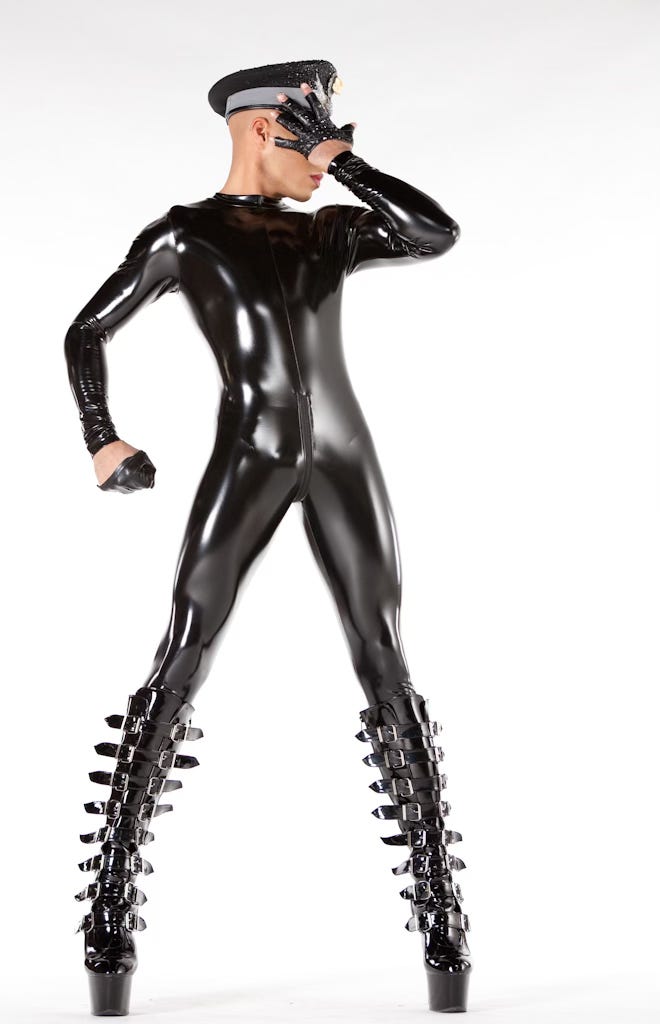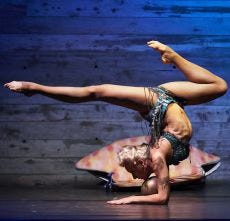Burlesque has always been a shapeshifter—adapting, evolving, and even clashing with itself as it morphs into different styles to fit new eras and audiences. Today, burlesque is a broad spectrum ranging from classic glamour to punk-rock chaos, from political satire to high-flying aerial acts. While this evolution has been thrilling, it has also sparked debate among performers and audiences about what "real" burlesque is. Let's explore the different styles, the performers who define them, and the ways they sometimes harmonize—or collide.
1. Classic Burlesque: The Golden Age Glamour
When most people think of burlesque, they picture the vintage Hollywood glamour of sequined gowns, satin gloves, and feathered fans. Classic burlesque, often inspired by the icons of the mid-20th century, is a tribute to the golden age of striptease, emphasizing slow teases, extravagant costuming, and polished stage presence.
Icons of Classic Burlesque:
Gypsy Rose Lee – The ultimate tease, she made striptease an art form by incorporating wit and storytelling.
Dita Von Teese – Arguably the most famous modern burlesque performer, she revived classic burlesque in the early 2000s with lavish stage productions.
Jo Weldon – A modern legend who not only performs but also educates, keeping the roots of classic burlesque alive.
Evolution & Clashes:
Classic burlesque purists often feel that the art form should maintain its vintage elegance, avoiding overly sexualized or modern elements. However, as burlesque evolves, some argue that traditionalists can be gatekeepers, resisting new interpretations of the craft.
2. Neo-Burlesque: The Rule-Breakers & Risk-Takers
Neo-burlesque exploded in the late '90s and early 2000s, bringing a punk rock ethos to the stage. This style embraces contemporary music, unconventional themes, and often a more raw, experimental aesthetic. Neo-burlesque can be political, grotesque, hilarious, or deeply personal—sometimes all at once.
Icons of Neo-Burlesque:
Dirty Martini – A powerhouse of body positivity and comedic, high-energy striptease.
Julie Atlas Muz – Known for avant-garde performances that push the boundaries of burlesque.
Trixie Little & The Evil Hate Monkey – A dynamic duo blending comedy, circus, and striptease.
Evolution & Clashes:
Neo-burlesque performers sometimes clash with classic burlesque artists who see their work as too chaotic, unrefined, or lacking the grace of the past. However, neo-burlesque has also expanded the accessibility of the art form, making space for performers of all genders, body types, and artistic influences.
3. Nerdlesque: The Rise of Pop Culture Burlesque
If you've ever seen a burlesque act inspired by Star Wars, Marvel, or Dungeons & Dragons, you've witnessed nerdlesque. This subgenre of burlesque blends fandom with striptease, creating performances that are both nostalgic and comedic.
Icons of Nerdlesque:
The Luminous Pariah – A master of blending nerd culture with high glamour and theatrical storytelling.
Viva La Muerte – Famed for her geek-centric burlesque routines that celebrate sci-fi and fantasy.
Anya Knees – Known for cosplaying characters while bringing a burlesque twist to conventions and shows.
Evolution & Clashes:
Nerdlesque has been both celebrated and criticized within the burlesque community. While it brings in new audiences, some argue that it leans too heavily on pop culture references and lacks the sensuality of traditional burlesque. Others see it as a playful, inclusive branch of the art form.
4. Circus Burlesque: When Aerialists Strip
Burlesque has long had roots in vaudeville, so it's no surprise that circus arts have become a major part of the modern scene. Whether it's aerial silks, lyra (hoop), fire performance, or contortion, circus burlesque is a visually stunning fusion of acrobatics and striptease.
Icons of Circus Burlesque:
Viktor Devonne – A master of blending burlesque with circus-inspired spectacle.
Marinka – An old-school legend who incorporated acrobatics into her burlesque acts.
Miss Ekaterina – A contemporary performer blending aerial work with burlesque striptease.
Evolution & Clashes:
Circus performers bring a level of athleticism to burlesque that some purists argue overshadows the tease aspect. On the flip side, circus burlesque has introduced audiences to the idea that burlesque can be more than just striptease—it can be breathtaking physical artistry.
5. Drag & Burlesque: A Perfect Pair or an Ongoing Debate?
Drag and burlesque have always shared a stage, but in recent years, draglesque has carved out its own space. Whether it's drag queens performing burlesque or burlesque performers incorporating drag aesthetics, this fusion is glamorous, gender-fluid, and often highly theatrical.
Icons of Draglesque:
Jett Adore – A leading male burlesque artist known for his drag-inspired glamour.
Violet Chachki – A RuPaul’s Drag Race winner who blends high fashion, fetish, and striptease.
Lou Lou D’Vil – A neo-burlesque queen with strong drag influences.
Evolution & Clashes:
While drag and burlesque have a shared history, there’s sometimes tension in how they are perceived. Some burlesque purists argue that drag performers overshadow traditional burlesque artists due to the mainstream popularity of drag. Others embrace draglesque as a natural extension of burlesque’s gender-bending, theatrical roots.
Burlesque's Future: Where Do We Go From Here?
As burlesque continues to evolve, so do the debates over what counts as "real" burlesque. But at its core, burlesque has always been about pushing boundaries—whether that’s through glamour, humor, politics, or pure spectacle.
Rather than seeing these styles as competing forces, perhaps the future of burlesque lies in embracing the multiplicity of its identities. The genre is no longer just about striptease—it’s a rich, ever-expanding art form that continues to surprise, provoke, and entertain.
Which style of burlesque speaks to you the most? Let me know in the comments! And if you love deep dives like this, make sure to subscribe for more behind-the-scenes burlesque content.
Stay dreamy,
Pennie









